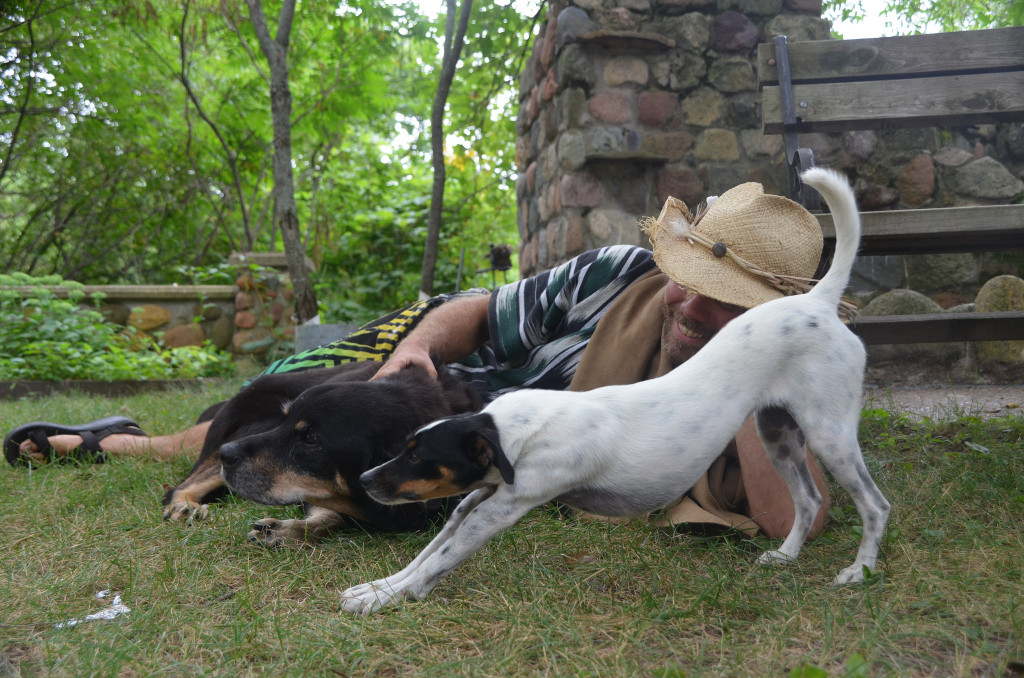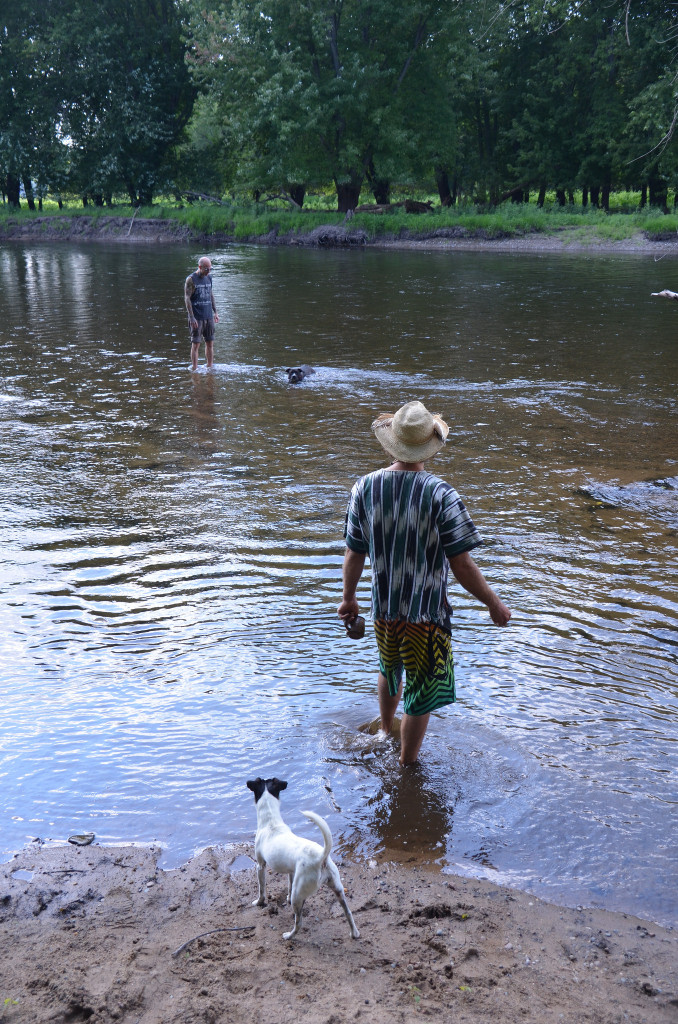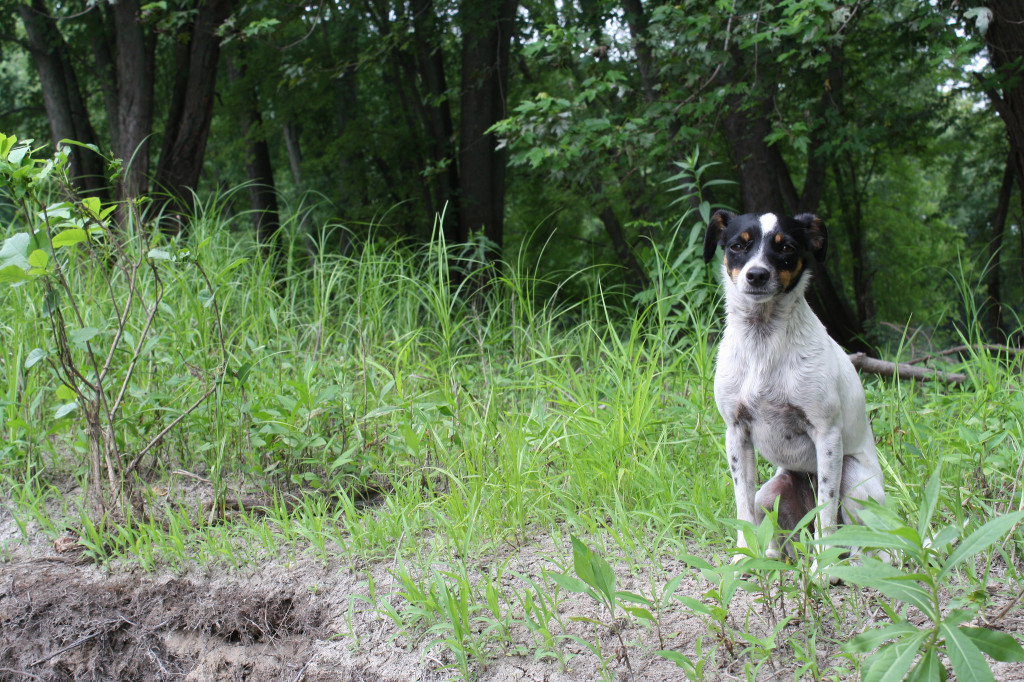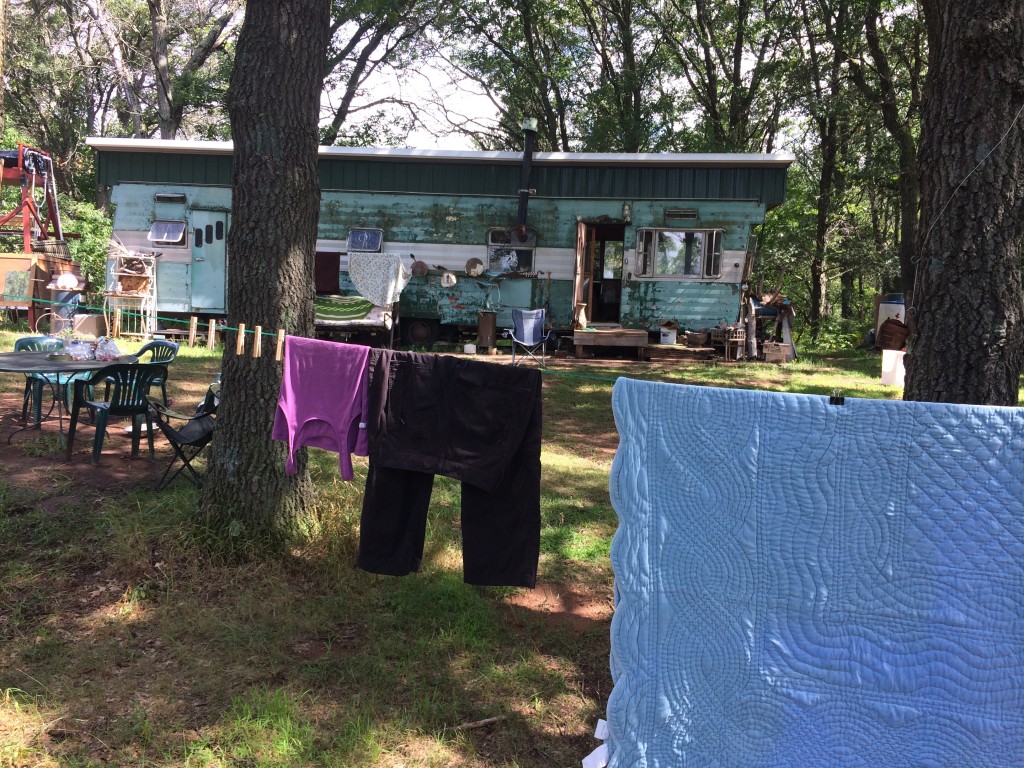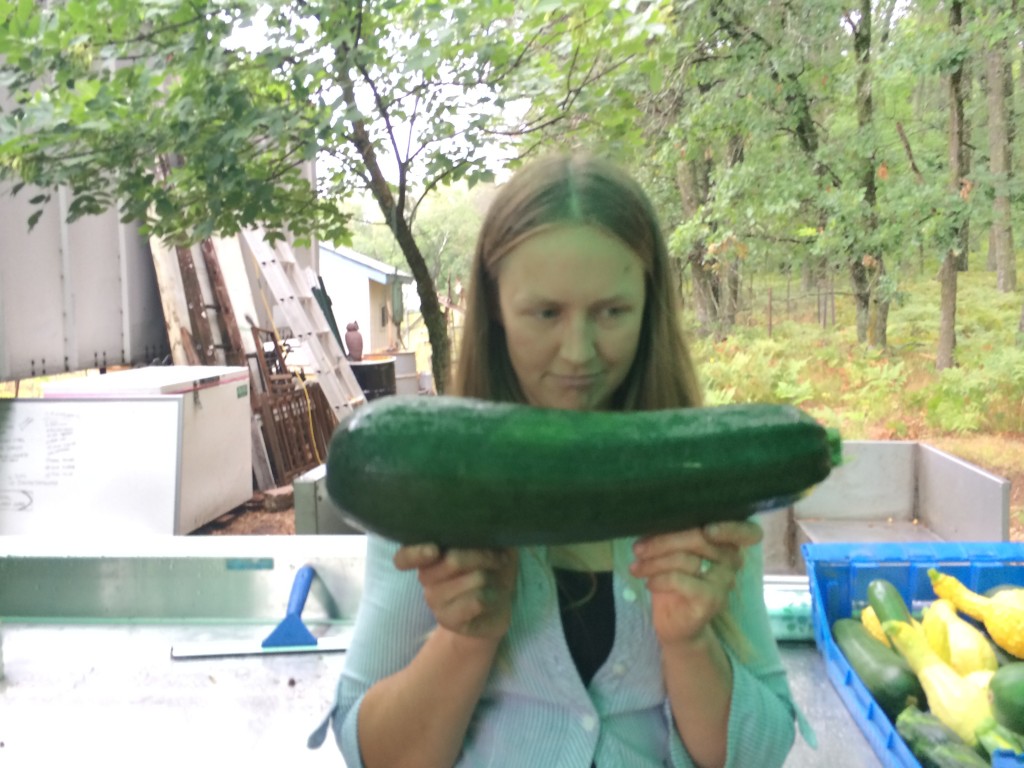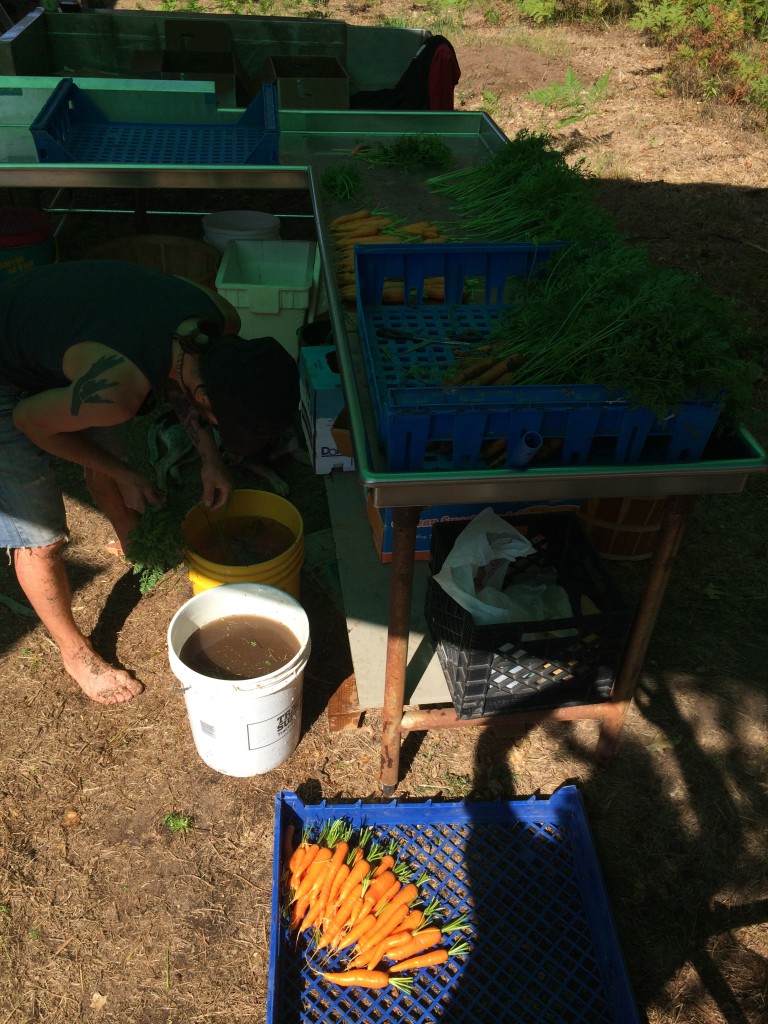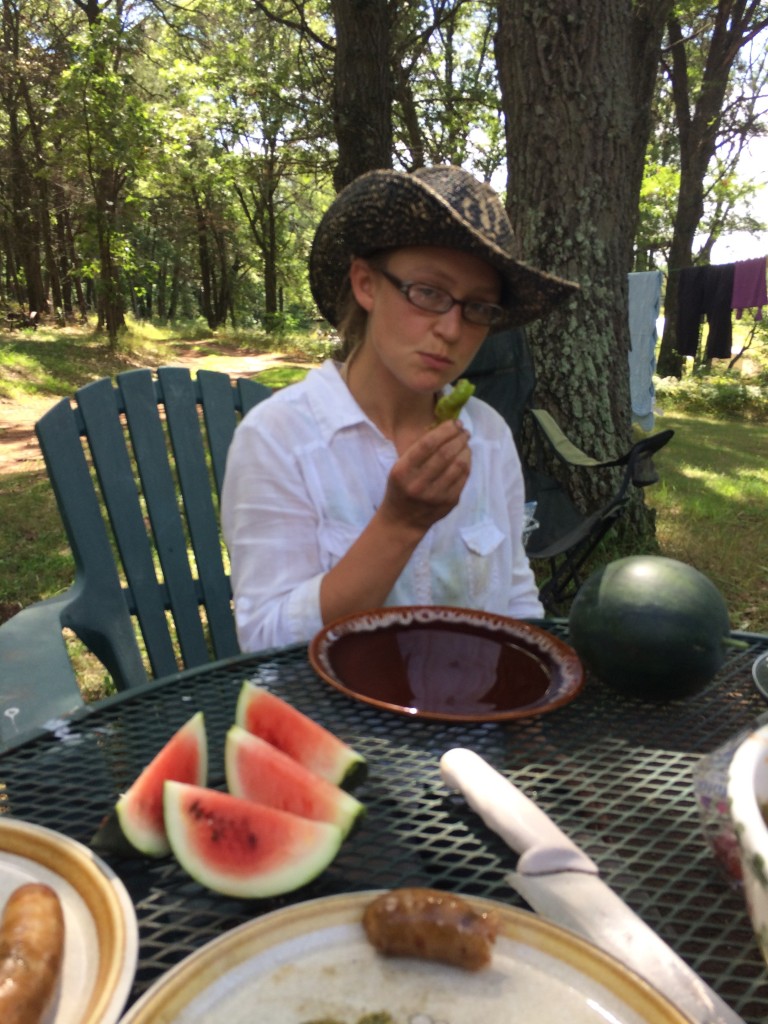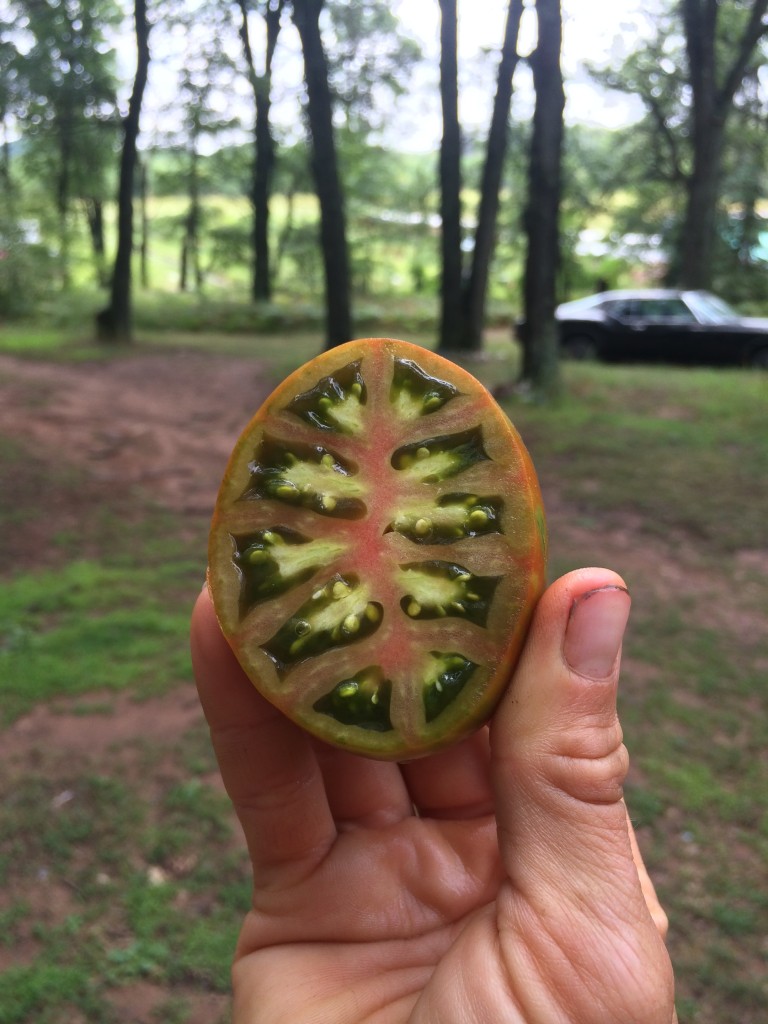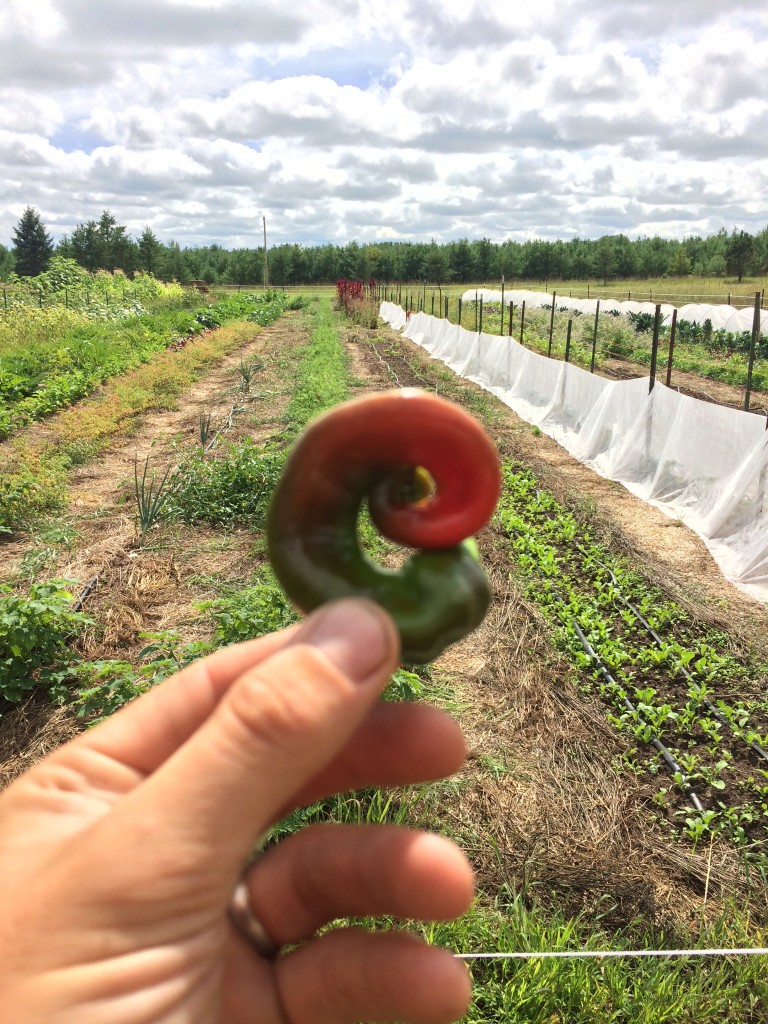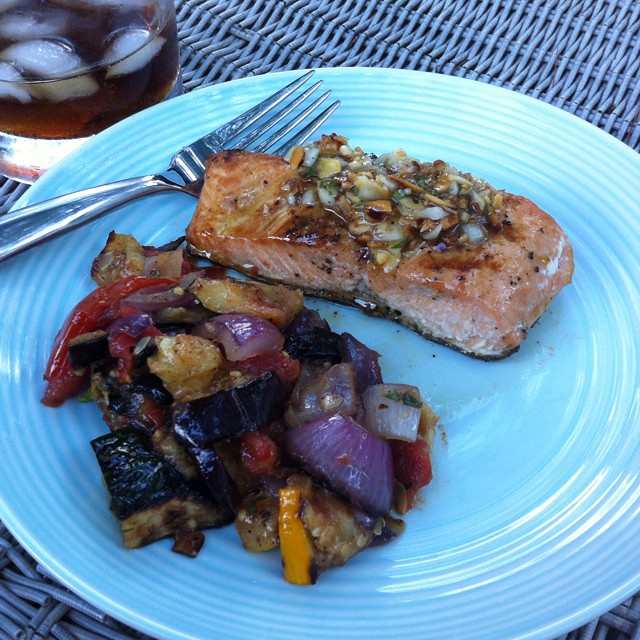On a sad note, Curly the rooster was seriously ill when we got home and checked up on the chickens – our neighbor took him back to her place for observation and treatment, but Curly was done; he died in the night a day and a half later, of causes unknown. It’s possible that the freak accident with the nesting box simply stressed his system out too much, and led to his collapse days later, or it may have been unrelated, we’ll never know. They had a brief ceremony for him and returned his body to nature, for recycling by foxes.
We mourned his loss, but still hit the ground running with our vacation momentum, preparing for a fall salad mix – the arugula we’d let go to seed was resprouting with the ample rain, so we simply cleared out the beds of old growth and weeds, and thinned out the dense sprouts for better growth. We planted Red Ruby and Buttercrunch lettuce, white stalked Pak Choi, spinach, and Ruby Streaks mizuna.
Our first planting of beans really got nailed by bugs and is unlikely to recover – but we had a second wave of backup-beans started – and the new wave is looking great, and should be ready to harvest as soon as next week. (We also had backup waves planted for the zucchini and cucumbers; this year those proved laughably unnecessary, but those who were members last year may recall the bizarre zucchini shortage we experienced.)
The squash, while definitely taxed by bugs and bacteria, is hanging in there and looking decent, thanks to the glorious rain and the emergency insectotomy surgeries. There is still some kind of gopher or mole or Tunneling Jerk Rat rooting through the potato row and messing up the plants and drying the spuds. Efforts to nab the beast continue.
Our compost piles are developing wonderfully, in large part thanks to the weekly garbage can filled with food scraps we get from the cafeteria we sell excess produce to, combined with our own food scraps, weeds, trimmings, and the piles of horse and cow manure donated by our amazing neighbors. If you would like to contribute compost weekly, let us know – we would love to turn your (non-meat) food scraps, egg shells, grass clippings (no pesticides or herbicides though), etc into black dirty gold for the field!
Compost is always crucial for organic farms, but it is extra vital for our field – the Sand Barrens tend not to hold nutrients well, as they are readily washed deeply into the ground beyond the reach of roots. Compost not only replenishes these nutrients, but adds organic matter to the soil, which helps with the retention of water and nutrients and delicious edible life.
- Carrots and Carrot Greens – Carrot Greens are not poisonous! Fact! They are, in fact, quite nutritious. The biggest hurdle to eating them is probably their tougher texture, so they do well chopped up into little herbal chunks. They work great in soup stock, chimichurri sauce, pesto, or anyplace parsley works. Here are a few recipes to consider – let us know what you wind up using yours for and how it works out – we’ll be experimenting right along with you this week.
As for the carrots – there are your standard sweet orange variety, a well as some more colorful and nutritious varieties in your box; red, yellow, and purple. They are zesty, even spicy – we recommend cooking with the rainbow tribe freaks, and enjoying the staid and steadfast orange ones in the raw.
- Spaghetti Squash – Noodley flesh! Cut it in half, scoop out the seeds, and cook it in your stove or microwave – checking it frequently so you don’t overdo it. When you scrape it with a fork and the stringy flesh comes off, it’s ready. Toss with other veggies and fresh herbs, or find a sweet recipe online or in your grandma’s cookbook.
- Watermelon – I’m not sure what the variety is right now, but it’s the earliest-ripening one we planted! We spent a good amount of time today trying to figure out the cryptic mysteries of watermelon ripeness detection; hopefully everyone’s melon is ripe and sweet, but if you should happen to get one picked early, we recommend Vodka augmentation.
- Tomatoes – an assortment of varieties that may include any of the types we planted this year: Red Rose, Black Prince, Earl of Edgecomb, Cherokee Purple, Old Brooks, Tricot Chezch, WI55, Grandma Mary’s Paste, Amish Paste, Snow White Cherry (actually we have never even seen this one I don’t think, even though we’ve planted it for three years), Jaune Flamme, Chocolate Cherry, or Tommy Toe. Who names these things anyway?
- Tomatilloes (the husky fellas in with the tomatoes)
- Peppers – varieties you have may include italian frying, Jimmy Nardello, King of the North, Wisc Lakes, Sirenevyi, Carmen, serrano, habanero (not actually ripe or in anyone’s box – yet), Czech black, Cayenne red, Cayenne golden, and/or jalepeno.
- Rainbow Chard
- Broccoli or Beans or Okra
- Italian Basil
- Green Zucchini & Yellow Summer Squash
- Cucumbers – Lemon & slicing varieties
CSA Member Dish of the Week
Grilled vegetable ratatouille by Megan – “Bought salmon, had a ton of CSA veggies and just happened to find the perfect recipes in Cook’s Illustrated!”


